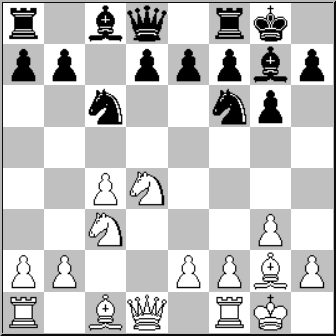I have read a lot of messages on different Forums about the merits of beginning with 1.Nf3 or beginning with 1.d4.
And a very big number of people said essentially this:
One of the advantages of starting with 1.Nf3 2. c4 is that it avoids the Benoni while starting with 1. d4 2. c4 does not.
But I just don't understand why that is the case.
.
After 1. Nf3 2. c4, if White wants to try to avoid the Benoni he should delay d4. At some point Black will play ...c5. But White will play d4 anyway sooner or later, and when White does play d4 Black will answer with ...cxd4.
For example, from a Symmetrical English move order:
- Nf3 c5 2. c4 Nf6 3. g3 (3. Nc3 Nc6 4. g3 will transpose; while 3. Nc3 Nc6 4. d4 cxd4 5. Nxd4 instantly gets into roughly the same position) g6 4. Bg2 Bg7 5. O-O O-O 6. Nc3 Nc6 7. d4 (7. d3 is inferior and scores very poorly for White) cxd4 8. Nxd4
Or from a King's Indian Defense move order:
- Nf3 Nf6 2. c4 g6 3. g3 Bg7 4. Bg2 O-O 5. O-O (5. d4 c5 transposes) c5 6. Nc3 (6. d4 cxd4 transposes) Nc6 7. d4 cxd4 8. Nxd4

These seem to be White's best tries to try avoid the Benoni (or I should probably say "to delay entering in a Benoni") by beginning with 1. Nf3 2. c4. White has many other possibilities, but they end up reaching roughly the same position as above even quicker than in 8 moves (and the only moves that White can play to get a different position are rare and weaker).
I'm not sure if this position is considered as a Benoni or not (one database calls this an "English Benoni formation", another source calls this an "Anti Benoni"), but it doesn't matter if it's really a Benoni or not, the only important question is: does it make a difference if White begins with 1. d4 2. c4 instead?
- d4 Nf6 2. c4 c5 3. Nf3 cxd4 4. Nxd4
Play can continue: 4... Nc6 5. Nc3 g6 6. g3 Bg7 7. Bg2 O-O 8. O-O
And we reach the exact same position!
Since I don't know if this position is considered as a Benoni or not, I don't know if White can or cannot avoid the Benoni by starting with 1. Nf3 2. c4, and I don't know if White can or cannot avoid the Benoni by starting with 1. d4 2. c4.
But this doesn't matter, because the point is: beginning with 1. Nf3 2. c4 or with 1. d4 2. c4 does not seem to make a difference if White wants to avoid the Benoni, since White ends up in the exact same position regardless of if he starts with 1. Nf3 2. c4 or with 1. d4 2. d4.
So the statement "one of the advantages of starting with 1.Nf3 2. c4 is that it avoids the Benoni while starting with 1. d4 2. c4 does not" should be false.
But obviously I must be wrong, I must be missing something, because I've seen dozens of people (some were very high rated) say that 1. Nf3 2. c4 avoids the Benoni while 1. d4 2. c4 does not.
